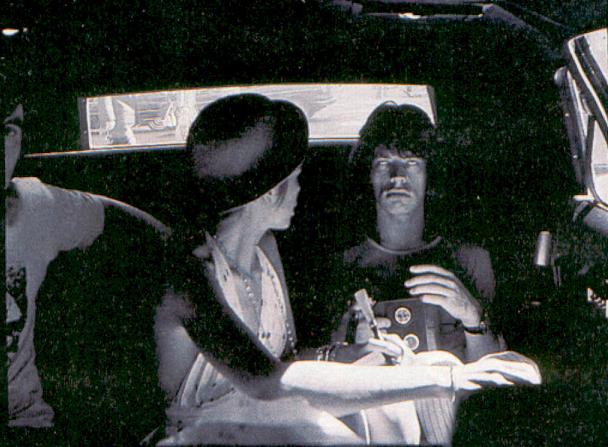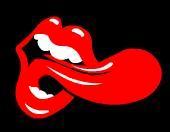| April 25th, 2004 12:31 PM |
|
|
| MrPleasant |
"The greatest british film ever made" re-released in the UK. More info on: http://www.bfi.org.uk/collections/release/performance/index.html
------------------------------------------------------------
http://www.sundayherald.com/41450
Bullet Through His Art
To mark the anniversary of Donald Cammell’s suicide and the re-release of his most famous film Performance, Mark Cousins pays tribute to the Scottish director whose non-comformist attitude fatally conflicted with his obsession with artistic movie-making
IT was eight years ago this weekend that Donald Cammell, one of the most discrepant artistic personalities to emerge from Scotland, shot himself in the head. His young wife China Kong – who was still at Hollywood High School when they met – was on the phone in their house in the Hollywood hills. Cammell laid before her a statement exonerating her from his suicide, then returned to his bedroom, from where she heard a bang. As Kong describes it, she found her husband mortally wounded but lucid, apparently in no pain, and talkative. She could not have been totally surprised by his suicide as he had often talked about the idea of controlling his own death. In his final minutes, before losing consciousness, he said these words to her: “Can you see the picture of Borges?”. It was a reference to his most important film, Performance, which is set for a major theatrical re-release early next month. Had he lived, Cammell would now be 70. He made only four films, but his work is of towering significance.
Cammell was born on January 17, 1934, in, of all places, the Camera Obscura observation tower next to Edinburgh Castle. His writer-poet father Charles, an heir to shipping magnates who lost their fortunes in the Wall Street Crash, and who had written a book on notorious Satanist Aleister Crowley, wanted his son to be a painter and sent him to the Royal Academy. The boy excelled there and by the early 1950s, still in his teens, was making a good living as a brilliant classical portraitist.
But the social and aesthetic conformism of the 1950s art world depressed him, so he went to Paris, gave up painting (which he said had died with the Impressionists), announced that film was the new artistic medium and met It Girl Anita Pallenberg. Pallenberg introduced him to the hyphenated world of pop-bohemianism whose current sage was Rolling Stones guitarist Brian Jones. Cammell was fascinated by Jones’s conception of himself in aesthetic terms, explaining that “he saw his life in a very poetic way, as in an artefact”.
Soon Mick Jagger was visiting too, and Cammell had fallen for the Dionysian world of pop. He loved Jagger’s idea that to perform was to let go of your rational self, and Jagger couldn’t get enough of Cammell’s erudite talk of literature and art. These were capricious times in the Scot’s life. After clubbing on a Saturday night he, Pallenberg and others would, on a whim, drive down to St Tropez.
When London started swinging Cammell moved there and became one of its leading lights. He wrote a screenplay, Duffy, which was botched by Hollywood, then another which explored his new fascination with the nature of performance, and which would become a landmark.
Called Performance and released in 1970, it was a bracing mosaic of a film about a London gangster, Chas, who is on the run from his own gang and who holes up in the house of Turner, a washed-up pop star. The papers at the time were full of the Kray twins and Cammell saw in them a showiness – a tendency to display – which reminded him of what he saw in Jones and Jagger. Warner brothers coughed up the budget, Cammell cast Jagger himself in the Turner part, clean cut James Fox as Chas and Pallenberg as one of the two women who share Turner’s house. He asked cinematographer Nicolas Roeg to co-direct and they began to shoot.
Roeg shut out all the natural light in the house where they shot the second half of the film, creating a dark cocoon in which they staged Chas’s drug-fuelled morph with Turner. Cammell dressed as a hippy and worked with the actors; Roeg, in blazer and tie, devised kaleidoscopic camera work. Each was obsessed by questions of merging identity, of gender fusion, of the relationship between drugs, madness and mental freedom, and layered these themes on to their narrative.
Warners hated everything about the result – the character geometry, the flashes of homosexuality, the intellectual references to everyone from Francis Bacon to Borges, Cammell’s elliptical editing, Roeg’s eye- popping lensing. They forced Cammell to shorten the first, gangster-based half of the film, but this made it even more impressionistic. When Performance was finally released it was mostly vilified. Roeg went on to make Walkabout and a string of masterpieces; Cammell, the more difficult of the two men, didn’t make another film for seven years.
For most of this time he lived in Los Angeles, the Mecca for all those who worshipped the commercial values in cinema which he so detested. Not surprisingly, the experience depressed him as much as 1950s Britain had. He wrote and abandoned a number of projects and lived off the fees from them.
Underground director Kenneth Anger cast him as Osiris, the Egyptian god of death, in his film Lucifer Rising (1973). Anger, who was obsessed by Aleister Crowley, knew Cammell’s father’s book on the subject and announced, in his inimitable way, that Cammell himself had a deathwish. The truth is that Cammell seems to have become convinced that what he called “uncensored” human life – whether expressed during a wild performance or by an artist or gangster – necessarily involved moments of proximity to death.
|
| April 25th, 2004 12:35 PM |
|
|
| MrPleasant |
(Bullet Through His Art - continuation)
------------------------------------------------------------
Such thoughts were never going to sit well with Hollywood optimism but Cammell put them into his films nonetheless. Demon Seed (1977), about a computerised machine called Proteus who traps Julie Christie in her house and then rapes her in order to produce a child was, remarkably, funded by MGM. The combination of Cammell and the ageing studio was disastrous. The shoot was fraught, the producers were not happy and the result flopped. Yet the beauty of Demon Seed’s design and the bleak surrealism of its conception made it one of the great sci-fi films of New Hollywood.
By this time Cammell had met Kong, who became co-writer on the rest of his projects. Together they adapted a serial killer novel into a baroque meditation on the destructive force of masculinity, White Of The Eye (1987). Cathy Moriarty, who played Jake LaMotta’s young wife in Raging Bull, was cast as the killer’s wife and remembers that she wasn’t allowed to improvise a single syllable of the script. Like Demon Seed, the film flopped – it was too heightened, too full of rage for ordinary cinemagoers – but its indictment of gender fundamentalism was Cammell at his most radical. The in-between sexual identities of Performance, which some saw merely as titillation, had by now become the filmmaker’s creed.
If the public and the studio bosses did not take to Cammell’s aesthetic, one major figure who did was Marlon Brando. Brando loved Performance and saw himself, like Cammell, as an intellectually driven non-conformist. He contacted the director and for nearly a decade they collaborated on various script projects. The one that came closest to realisation was Jericho, co-written by China and co-starring Moriarty. But ironically it was Brando himself who had Cammell removed from the project, reportedly because of his refusal to compromise artistically. Jericho was never made.
Eight years lapsed between White Of The Eye and the last, mutilated film Cammell would make, Wild Side. Christopher Walken, Joan Chen and Anne Heche starred, but the by-now-familiar post- production clashes took place. When the producers saw Cammell’s cut they issued a memo banning him from using montages, flash forwards or flash backs, the very things which were his hallmark. He tried to resign from the project and is credited as Franklin Brauner on some prints of it.
No wonder, perhaps, that three years later he was driven to kill himself. The 1970s in Hollywood are thought of as a tolerant time for artistic temperament yet the Jungianism, sexual modernity and avant gardism of the boy from Edinburgh was clearly beyond the pale. The contours of his career are similar to those of Orson Welles, in several ways. He was a prodigy with a baroque vision who started with a great film and had to fight the studios thereafter to realise his vision which survives, in three of his four films, in mutilated versions.
It is tempting to wonder how things might have been different. Maybe a great producer-interlocutor would have eased his relations with funders. Perhaps he fell too completely in love with the ideas of the 1960s. Certainly if he were alive today – or had been born later – the freedoms afforded by digital filmmaking might have allowed him to realise his vision more fully.
Whatever, eight years after his death, it is good to salute Donald Cammell. A seditious Scottish dreamer – one of many.
Performance is re-released on May 7
25 April 2004
|
| April 25th, 2004 01:06 PM |
|
|
| J.J.Flash |
Wasn't on "Performance" that Jagger had the role of a drag queen? |
| April 25th, 2004 01:11 PM |
|
|
| MrPleasant |
Yes. With the dark "Rock'n'roll circus" hair. |
| April 25th, 2004 01:13 PM |
|
|
| MrPleasant |
On second thought... I think you mean the nineties movie "Bent". |
| April 25th, 2004 01:14 PM |
|
|
| J.J.Flash |
I love that hair, I love R'n'R Circus, I love Jagger, but I would be embarrassed watching the movie! hahhaha, does Jagger perform sex scenes on that movie?
I must watch it one day! |
| April 25th, 2004 01:29 PM |
|
|
| MrPleasant |
According to Stephen Davis ("Old Gods, Almost Dead"), Donald Cammell arranged the sequences involving Mick & Anita Pallenberg as a thirty-minutes porn flick.
|
| April 25th, 2004 01:49 PM |
|
|
| Bloozehound |
Anita gives me a stiff one |
|

 CHAT
ROOM aka THE FUN HOUSE] [
CHAT
ROOM aka THE FUN HOUSE] [ RESTROOMS]
RESTROOMS]